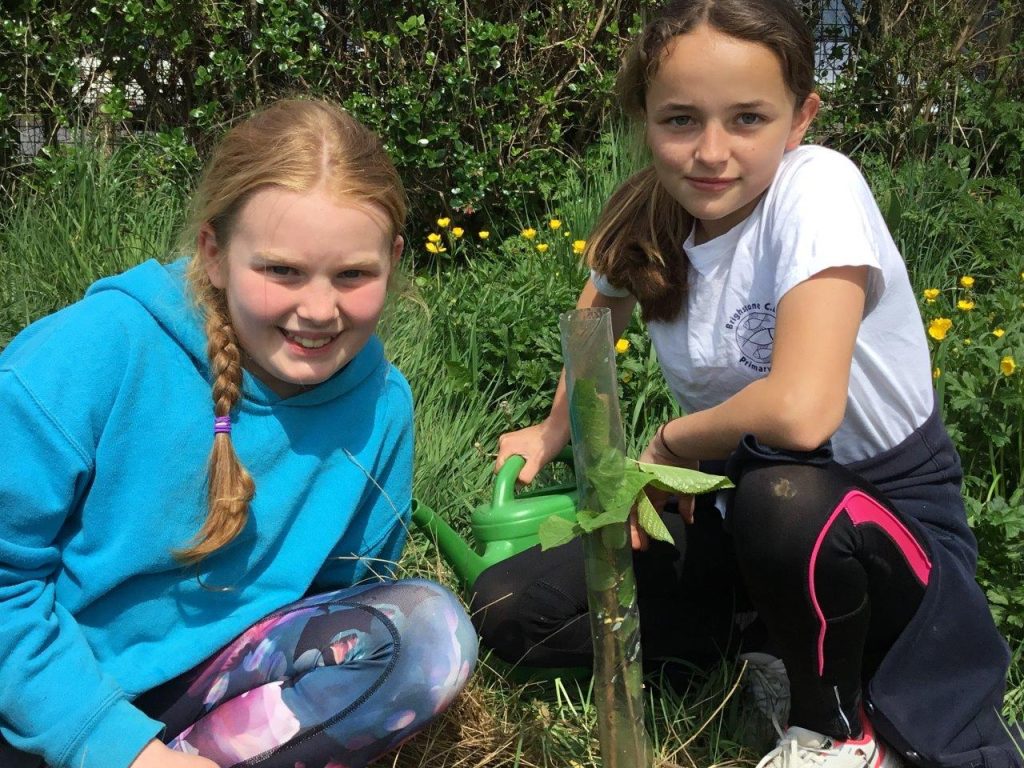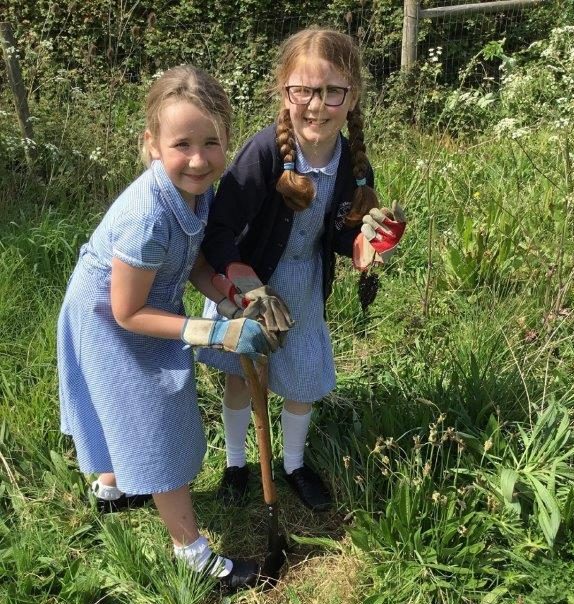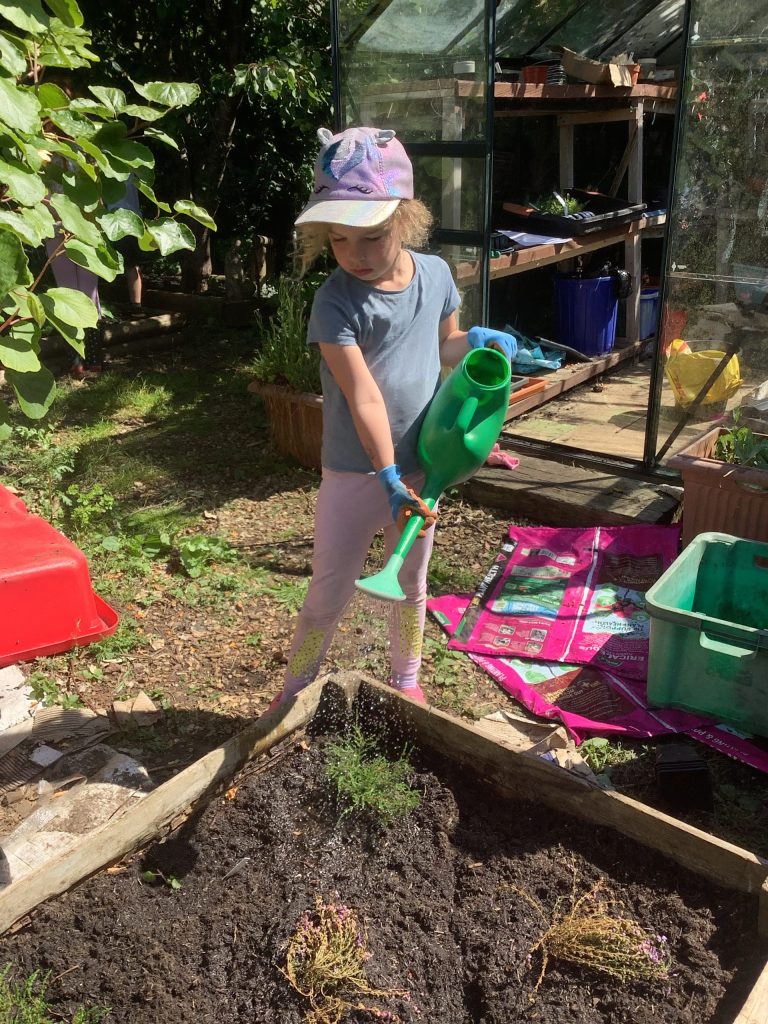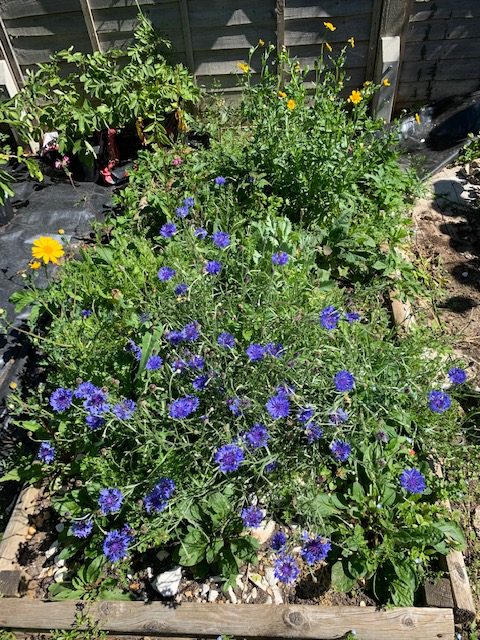Brighstone C.E. Aided Primary School

At the start of the academic year, Brighstone School’s Eco-Committee identified increasing biodiversity in the school grounds as a top priority for the year ahead and looked at different ways in which this could be achieved. In their application for the Green Fund for Schools, the school told us:
“Last year, our children expressed a keen interest in becoming a ‘green’ school. They are passionate about caring for their environment and wanted to do more as a school, particularly as the Isle of Wight is a UNESCO Biosphere Reserve. We set up an eco-school committee with representatives from each class. The children carried out an environmental audit and then the committee decided on three priority areas based the eco-school criteria. These areas for development are biodiversity, waste and marine conservation.”
We have a number of practical activities planned which will increase the biodiversity of our school grounds: 1. Creating wildflower meadows by making bee bombs to deploy across grassed edges of the main school playground. 2. Planting a native woodland copse with 30 trees supplied by the Woodland Trust at the end of our playing field. 3. Creating a chalk downland wildflower mini habitat which will replicate the flowers found on Brighstone Down. 4. Creating a contrasting heathland flower habitat which will replicate the heathland habitat found on the downs. 5. Renovating our redundant vegetable garden to provide diversity through growing fruits and vegetables which can be eaten by both children and wildlife. 6. Providing a bird feeding and watering station in the corner of our playing field to give the children an opportunity to investigate local bird life.”

Shortly after being awarded £660.00 from Wightlink, a new woodland copse and wildflower meadows were created at Brighstone Primary School for the Queen’s Green Canopy – a joint initiaitve using the grant from Wightlink’s Green Fund for Schools and the Woodland Trust’s Free Trees for Schools initiative.
With help from the school’s gardening club, wildflower seeds were sown around the playing field to create a floral bee border, with native plug plants due to be added later this month. Chalk downland wildflower habitats were planted along with a contrasting heathland flower habitat to replicate the flowers found on Brighstone Down.
Children from Year 6 and Year 3 worked hard to plant native wild cherry, silver birch and rowan trees at the side of the school’s playing field, which in time will provide food and shelter for birds and small animals.
Headteacher Rebecca Lennon said: “Thanks to the grant from Wightlink, trees from the Woodland Trust and help from Isle of Wight Compost, the children have made a really good start in transforming the school grounds, which I know they will enjoy studying as the plants bloom and birds and insects are attracted to the new habitats.”
The school will also be making use of Wightlink’s £660 grant to renovate the school’s vegetable garden and install a new tumbling compost bin – news on which will follow soon.

We caught up with the school in November 2022, to hear about their project. They told us that the hot summer and hosepipe ban had created some issues:
“The heather bed and wildflower beds have been successfully planted, the wildflower borders have been prepared and the woodland copse has been completed.
Our biggest challenge was the weather. The long dry summer months put considerable stress on all new planting and we lost some of the newly planted trees. Long crocodiles of children with watering was not enough to combat the intense heat. We hope the wild flower meadow will have survived the drought. Some of the heather also died but we are hopeful we can collect seeds in the spring to replenish the gaps.
A barrel compost bin has been purchased which will collect the food waste from lunches so we can start making our own compost.”
This term we are setting up a school council which will look at the wider school issues and hopefully come together to continue our schools green agenda.”
